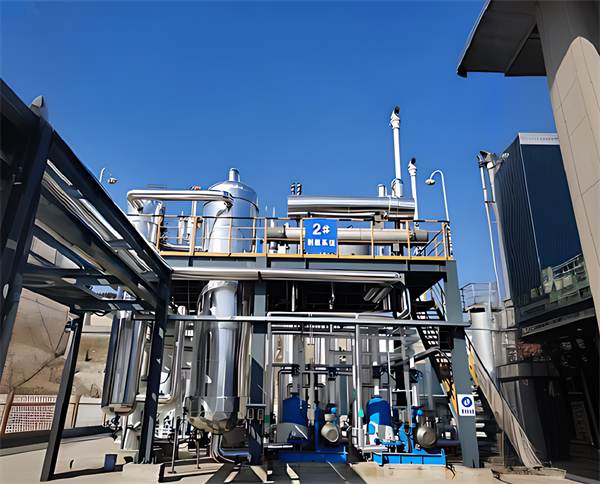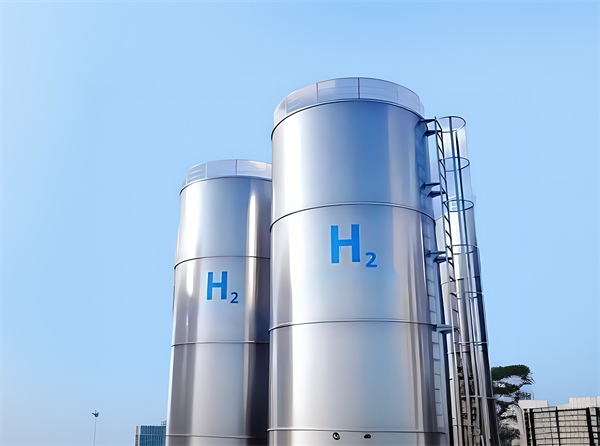Content
1. Petroleum and Chemical Industries
2. Steel Industry
3. Glass and Electronic
4. Food and Pharmaceutical Industry
5. Clean Energy and Electricity
6. Logistics and Transportation
7. Energy Storage and Balance
Challenges and Prospect
Hydrogen energy is widely and diversely used in industry, gradually replacing traditional fossil fuels and reducing carbon emissions due to its cleanliness, efficiency, and renewability.
1. Petroleum and Chemical Industries
Hydrogen is a raw material for refining (hydrogenation desulfurization, hydrogenation cracking) and chemical industry (synthesis of ammonia, production of methanol)
For example, hydrocracking decomposes heavy and complex hydrocarbons such as petroleum and converts them into lighter hydrocarbons. Hydrocracking is a catalytic cracking process aimed at increasing the production of gasoline and aviation fuel.
Hydrogenation treatment removes impurities from hydrocarbon streams, making them cleaner and more efficient. Impurities include sulfur-containing compounds, nitrogen, and metals.
Hydrogen is an important raw material for the production of synthetic ammonia and industrial methanol, accounting for approximately 55% of the global industrial hydrogen production.
2.Steel Industry
At present, the application of hydrogen in the steel industry can be roughly divided into two aspects:
(1) as a reducing agent to reduce iron oxide, mainly involving blast furnace production processes and gas based direct reduction iron (DRI) processes; Reduce carbon emissions (traditional steelmaking accounts for approximately 7% of global carbon emissions).
What is hydrogen steel technology?
This process is called hydrogen based direct iron reduction (H2-DRI), which converts iron ore into iron in a DRI furnace and uses green hydrogen gas to react with iron oxide in the iron ore. The iron produced from this can be called ‘green iron’.
(2) As fuel heating, including auxiliary sintering production, pellet production, etc.
3. Glass and Electronic Manufacturing
Hydrogen can be used as a protective gas during the glass forming process to prevent oxidation of the glass surface. This helps improve glass quality and reduce defects.
Hydrogen can be used as fuel for furnaces, which are used to melt raw materials such as sand, soda ash, and limestone to produce glass. By using hydrogen as fuel, the energy efficiency of the smelting process can be improved, thereby reducing emissions and improving product quality.
Hydrogen gas (H2) is widely used in electronic manufacturing in the fields of semiconductors, displays, LEDs, and photovoltaics. Hydrogen with the simplest molecule exhibits unique properties. It has excellent heat transfer capabilities. It is an efficient reducing and etching agent.
Hydrogen is used as a carrier gas in the semiconductor manufacturing process, which helps to remove impurities from silicon wafers, promote the deposition of thin layer materials, and ensure the high quality of semiconductor devices.
4. Food and Pharmaceutical Industry
Hydrogen is used for the production of margarine and the synthesis of pharmaceutical intermediates
Hydrogen has entered the food industry, especially as a food additive. It is mainly used as a reducing agent in certain food production.
The hydrogenation process can improve the consistency and stability of food, enabling it to be stored for a longer period of time. It also helps improve the taste and texture of certain products, making them more popular among consumers.
Hydrogen is used to harden fats and is also commonly used as a protective gas in food packaging to prevent product oxidation. In addition, it can also prolong the freshness of certain products such as meat and seafood by inhibiting bacterial growth.
Hydrogen plays a crucial role in the production of vitamins and drugs, especially through hydrogenation reactions. This chemical reaction typically utilizes catalysts such as platinum or nickel, which aid in the synthesis of various essential compounds.
5. Clean Energy and Electricity
Hydrogen is the most abundant element in the universe and produces almost no pollution when burned, making it an ideal energy source. There are various ways to produce hydrogen, which determines whether hydrogen is defined as gray, blue, green, or pink.
The top ten green hydrogen producing countries currently include Australia, the United States, China, South Korea, France, Spain, the Netherlands, the United Kingdom, Germany, and Japan.
Hydrogen fuel cells or hydrogen gas turbines provide electricity and heat, data centers, semiconductor companies, and uninterrupted power enterprises use hydrogen fuel cells as backup power sources.
6. Logistics and Transportation
Hydrogen fuel cell vehicles (forklifts, trucks) are used for industrial logistics and are suitable for long-term operations and heavy trucks.
Hydrogen fuel has the characteristics of fast refueling, zero emissions, and lighter weight. It can be used as the main propulsion power for small ships as well as an auxiliary power for large ships.
Kawasaki Heavy Industries, Yanmar Power Technology, and J-ENG are simultaneously developing low-speed, medium speed, and high-speed engines fueled by hydrogen. By around 2026, they will launch a series of hydrogen fueled ship engines that can be used for various ship types, while also developing corresponding hydrogen fuel tanks and fuel supply systems for ships.
7. Energy Storage and Balance
Electrolysis of water to produce hydrogen is a method of producing hydrogen gas by electrolyzing water. The process of electrolyzing water requires the use of electrical energy to drive the decomposition of water into hydrogen and oxygen. On the cathode, hydrogen gas is released, while on the anode, oxygen gas is released. This process uses electrolytic cell PEM or ALK. The Titanium sintered fiber felt or Nickel sintered fiber felt is popularly used. The advantages of electrolyzing water to produce hydrogen are high purity and no pollution, but it requires a large amount of electricity consumption, resulting in higher costs. Electrolyzing water to produce hydrogen is beneficial for energy storage because it can convert electrical energy into chemical energy for storage, and convert surplus electricity into hydrogen. It is renewable energy hydrogen production, also named green hydrogen. It can be used as an alternative fuel to balance power grid fluctuations, alleviate power grid pressure, or for industrial use in the future.
Hydrogen energy storage solves the seasonal balance problem of renewable energy generation.
Calculation data shows that spring and summer are basically in a state of energy supply surplus, while autumn and winter have energy shortages for most of the time. We can reserve the surplus electricity from the first half of the year for use in the second half of the year through hydrogen production, in order to reduce our dependence on fossil fuels.
The method of long-term and large-scale hydrogen storage is underground storage, which currently includes three pathways: depleted natural gas or oil fields, depleted aquifers, and salt caverns. Among them, salt cavern hydrogen storage technology is the most mature. In Europe, Germany, France and other countries are considering using salt caverns for underground hydrogen storage, whose main advantage is that it can maintain the purity of hydrogen unchanged.
Challenges and Prospects
High cost of green hydrogen, bottleneck in storage and transportation technology, and insufficient infrastructure
Policies from various countries, such as the EU Hydrogen Strategy, aim to achieve a target of 1000W tons of green hydrogen by 2030. Technological progress and economies of scale drive cost reduction. The electrolytic cell efficiency is increased to over 70%. The PEM with Titanium sintered fiber felt and ALK with Nickel sintered fiber felt is increasing.
The penetration of hydrogen energy in the industrial sector is accelerating the global decarbonization process, especially in heavy industry and high energy consuming industries, with enormous potential. However, progress in the industrial chain and policy support are needed to achieve large-scale applications.


